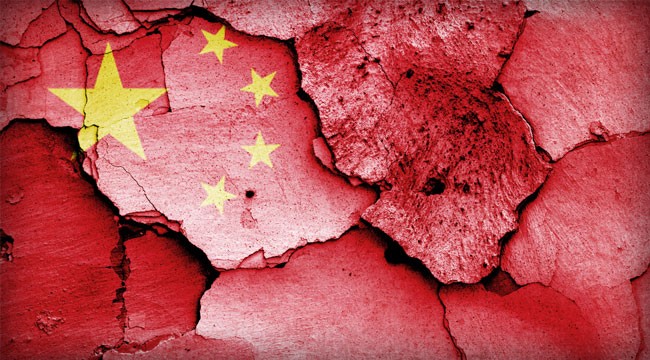The Greatest Financial Bubble in History
by Jim Rickards, DailyReckoning:
 China is in the greatest financial bubble in history. Yet, calling China a bubble does not do justice to the situation. This story has been touched on periodically over the last year.
China is in the greatest financial bubble in history. Yet, calling China a bubble does not do justice to the situation. This story has been touched on periodically over the last year.
China has multiple bubbles, and they’re all getting ready to burst. If you make the right moves now, you could be well positioned even as Chinese credit and currency crash and burn.
The first and most obvious bubble is credit. The combined Chinese government and corporate debt-to-equity ratio is over 300-to-1 after hidden liabilities, such as provincial guarantees and shadow banking system liabilities, are taken into account.
Paying off that debt requires growth, but the growth itself is fueled by more debt. China is now at the point where enormous new debt is required to achieve only modest new growth. This is clearly non-sustainable.
The next bubble is in investment instruments called Wealth Management Products, or WMPs. You may remember hearing about in the Daily Reckoning and also covered in Bloomberg’s article China Is Playing a $9 Trillion Game of Chicken With Savers.
Picture this. You’re a middle-class Chinese saver and you walk into a bank. They offer you two investment options. The first is a bank deposit that pays about 2%. The other is a WMP that pays about 7%. Which do you choose?
In the past ten years, bank customers have chosen almost $12 trillion of WMPs. That might be fine if WMPs were like high-quality corporate or municipal bonds. They’re not. They’re more like the biggest Ponzi scheme in history.
Here’s how they work. Proceeds from sales of WMPs are loaned to speculative real estate developers and unprofitable state owned enterprises (SOEs) at attractive yields in the form of notes.
So, WMPs resemble collateralized debt obligations, CDOs, the same product that sank Lehman Brothers in the panic of 2008.
The problem is that the borrowers behind the WMPs can’t pay their debts. They’re relying on further bubbles in real estate or easy credit from the government to meet their interest obligations.
What happens when a WMP matures? Usually the bank customer is encouraged to rollover the investment into a new WMP. What happens if the customer wants her money back? The bank sells a new WMP to another customer, then uses those sales proceeds to redeem the first customer. The new customer now steps into the shoes of the first customer with the same pile of bad debt. That’s where the Ponzi dynamic comes in.
Simply put, most of the debts backing up the WMPs cannot be repaid, which means it’s just a matter of time before the WMP market goes into a full meltdown and triggers a banking panic.
Finally, there is an infrastructure bubble. As explained in more detail below, China has kept its growth engine humming mostly with investment instead of aggregate demand from consumers.
Investment is fine if it is directed at long-term growth projects that produce a positive expected return and help the broader economy grow as well. But, that’s not what China has done.
About half of China’s investment in the past ten years has been wasted on “ghost cities,” white elephant transportation facilities, and prestige projects that look good superficially, but that don’t produce enough revenue or efficiencies to pay for themselves.
Much of this investment was financed with debt. If the project itself is not revenue producing then the associated debt cannot be repaid, and will go into default.
The toxic combination of government debt, corporate debt, WMPs, and unrealistic growth expectations have set up China for the greatest market crash in history. But, not yet. As analysis will continue to prove, political forces will put off a day of reckoning until early 2018.
The Daily Reckoning will continue to guide through these overlapping credit and asset bubbles, and the likely timing of their collapse. Investors who stay informed now will be in the best position both to avoid losses when the bubbles burst and to reap huge rewards.
The Middle-Income Trap
Most of the debt statistics noted above are well known. Analysts are relaxed about it. They acknowledge that debt levels are high, but point to the fact that China has the second largest economy in the world, and is by far the fastest growing major economy in the world.
Even though growth rates have fallen from 10% to 6.5% in recent years, that 6.5% growth is still enviable compared to 2% growth in the U.S., and less than 1% growth in Europe. China’s debt burdens are manageable as long as the growth is there to support the debt.
This rosy scenario ignores two harsh realities. The first is known as the “middle-income trap.” The second is a death spiral of rising debt and rising interest rates that choke off growth just when it is needed most.
When I studied development economics in graduate school in the 1970s, it was widely believed that the most difficult part of moving countries from poverty to wealth was the initial stage. Societies seemed stuck in a permanent rut of primitive agrarian culture and simple resource extraction.
What was needed was a “takeoff” that would move citizens to cities, improve productivity on the land (the “green revolution”), and employ newly urbanized workers with foreign direct investment, foreign aid, and national savings. From there the expectation was that growth would be self-sustaining and economies would grow rich over time — just as Japan and Germany had achieved high-income status from the ruins of World War II.



